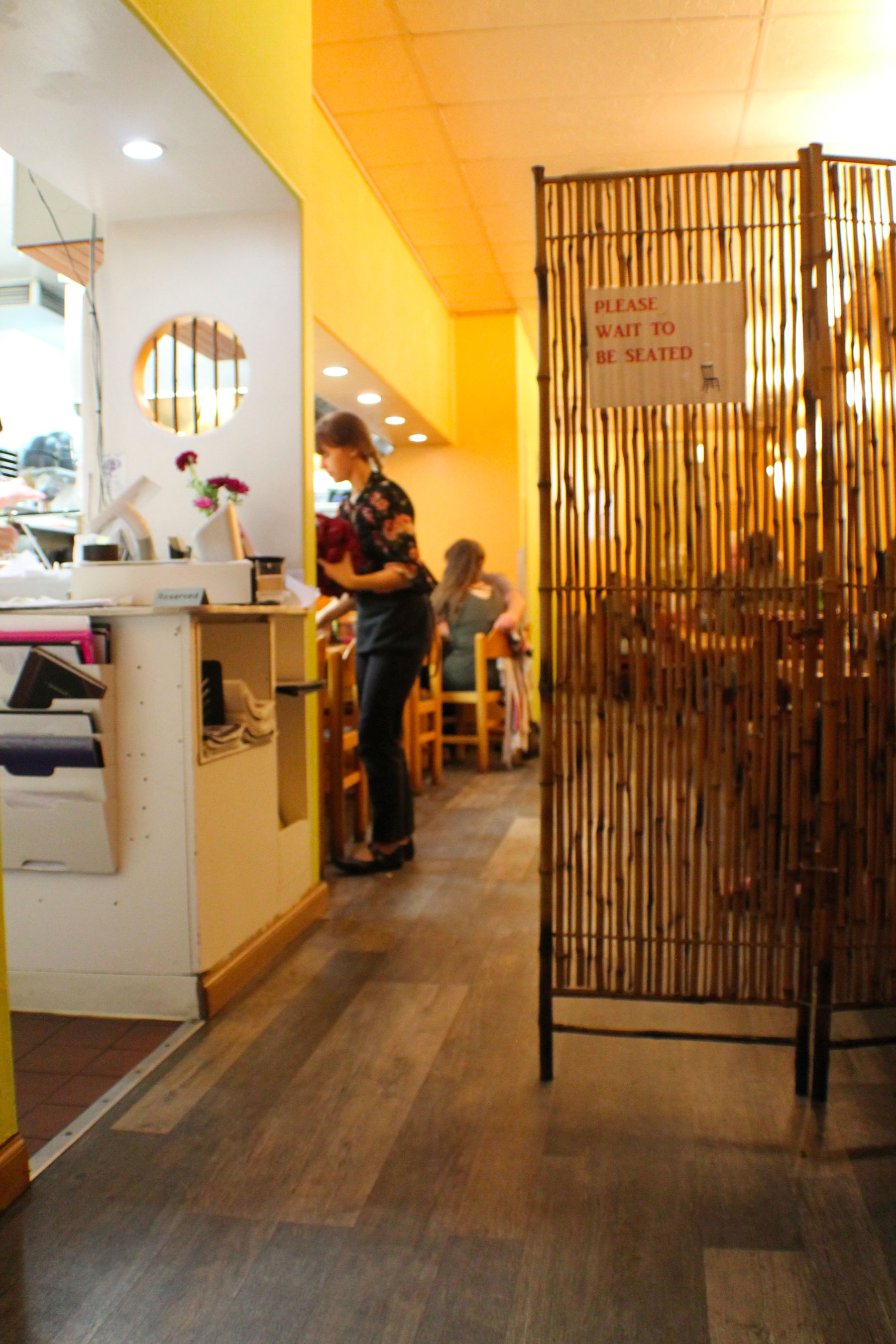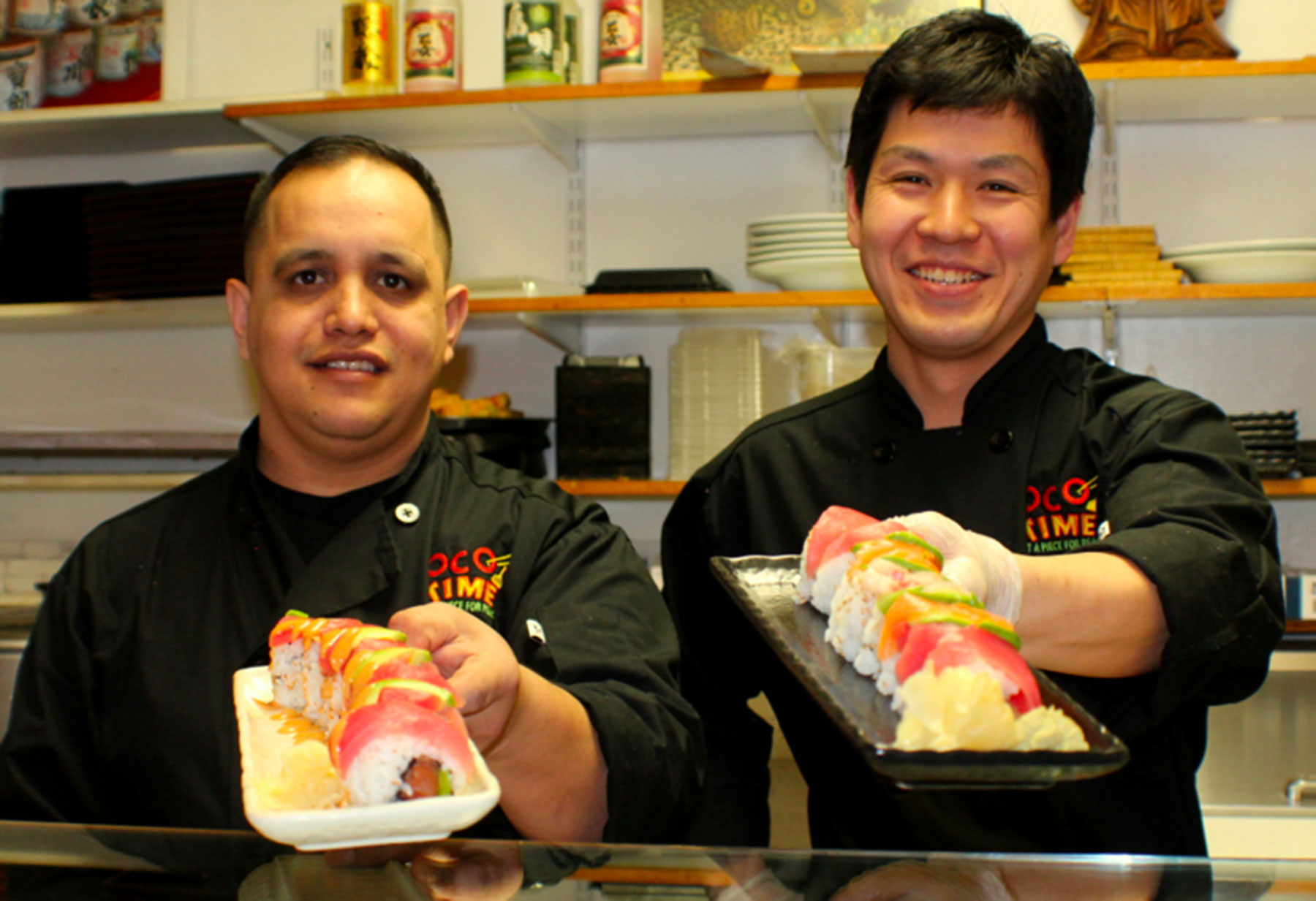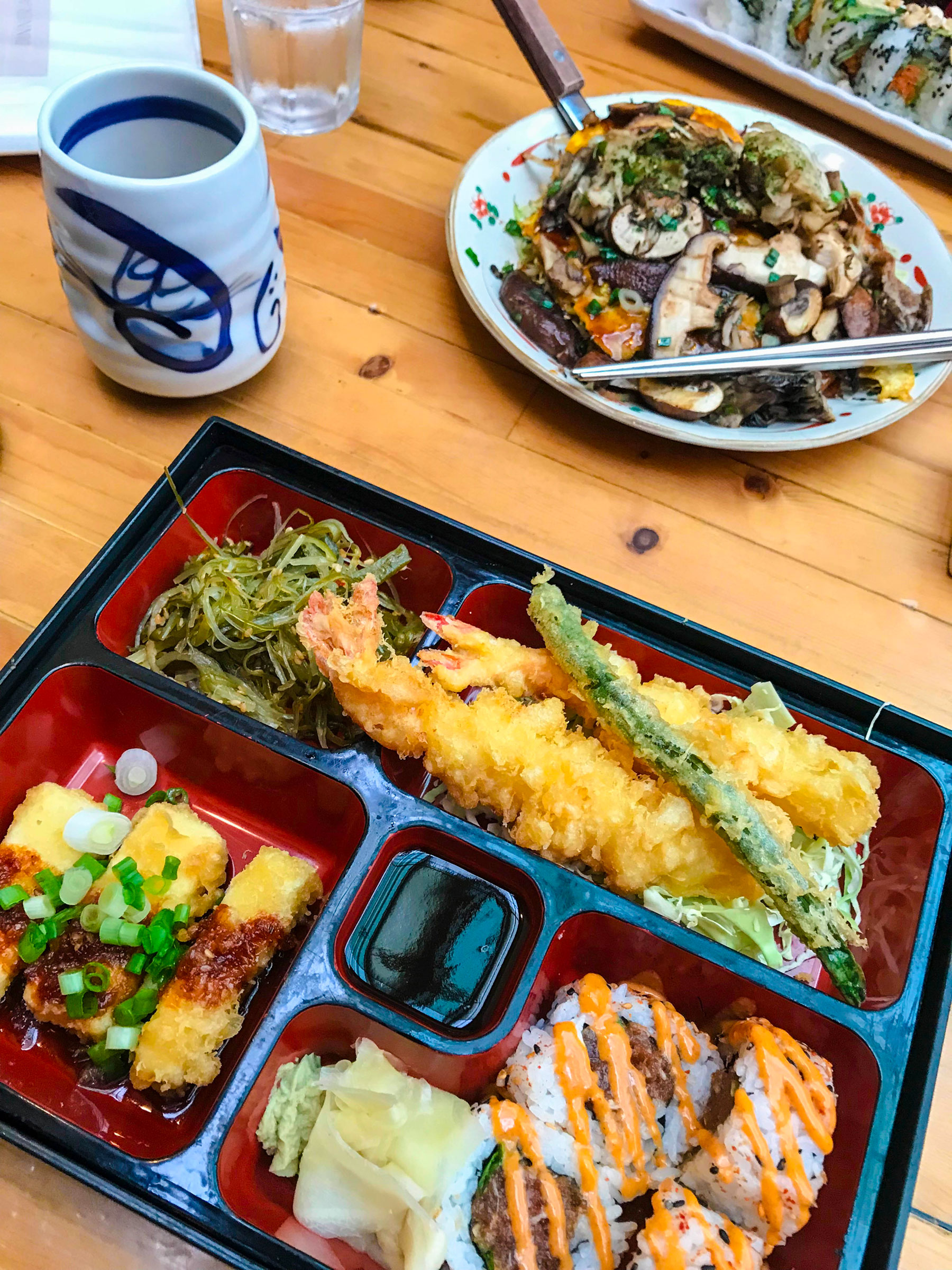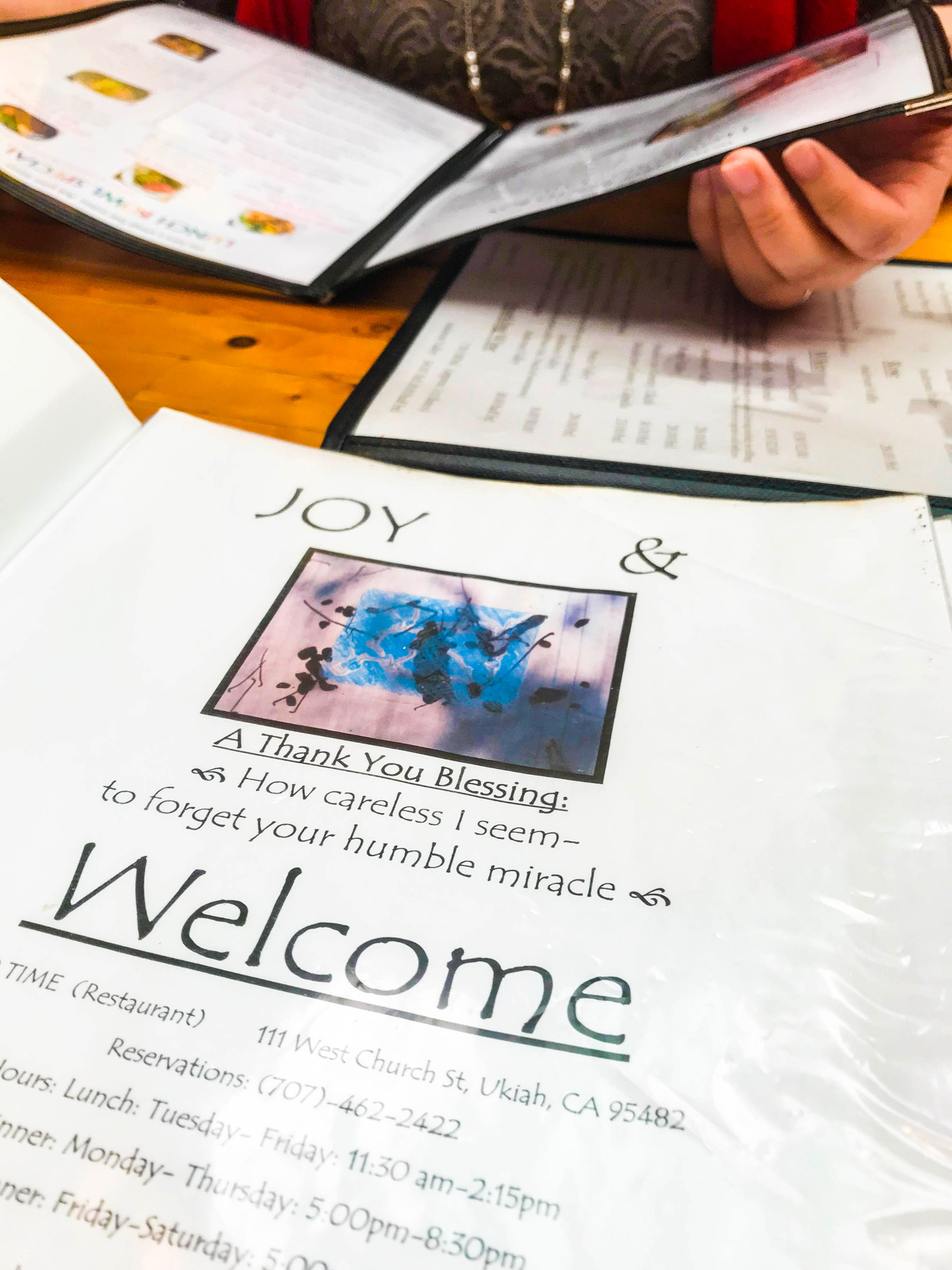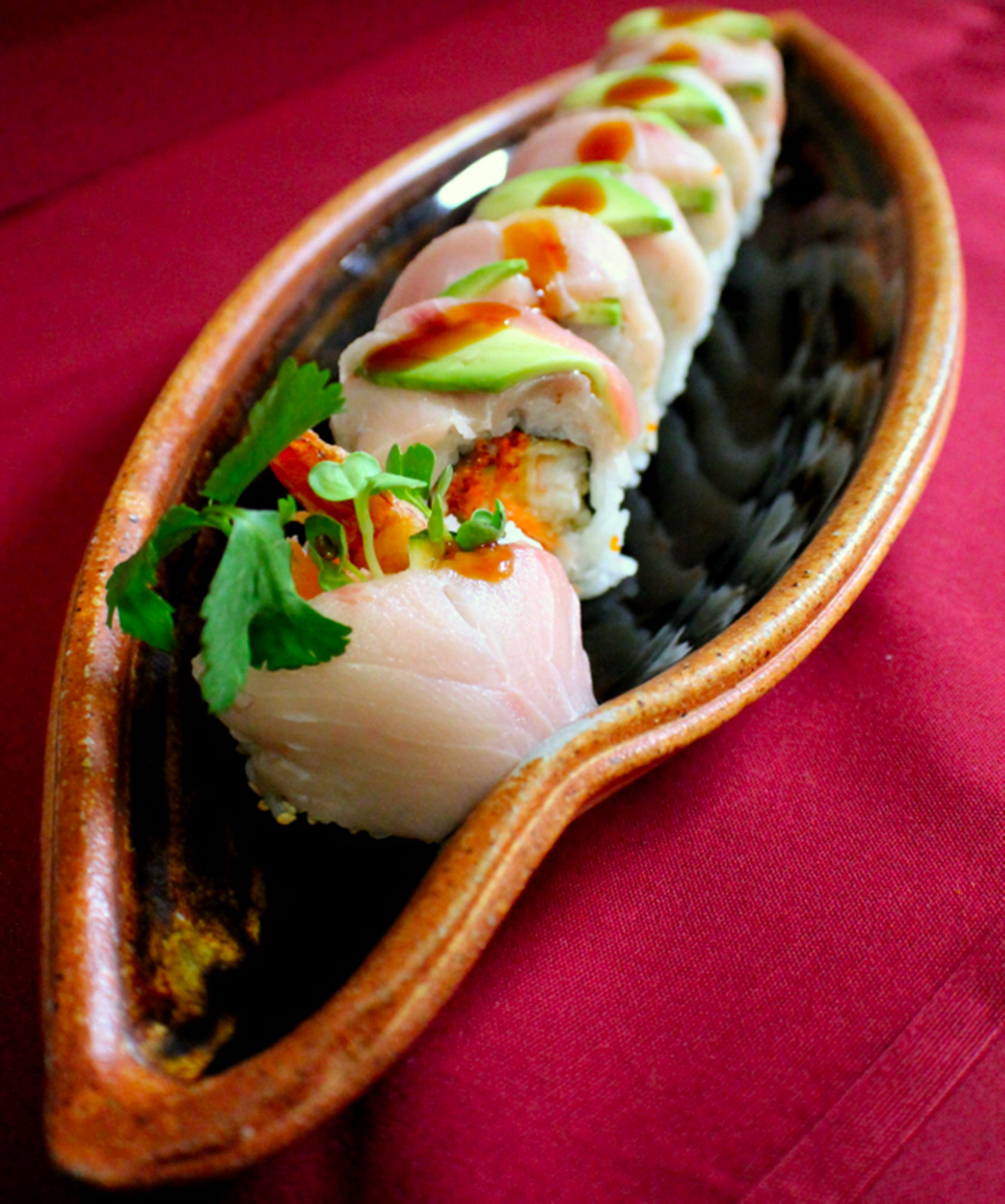Peace Through Food

Everyone is Family at Oco Time in Ukiah
by Torrey Douglass
When you first walk into Oco Time and stand in the tiny entry area, a shelf to your left contains a smattering of announcements and inspiring postcards as well as a few copies of the book, The Abundance of Less, for sale. The book’s title reflects so much about Oco Time that attracts the tiny sushi restaurant’s large and devoted following: savoring what is rather than grasping for what isn’t, honoring every positive detail and seeing it as a piece of a larger good, and staying present—truly present—with the people one meets.
This ability to connect human-to-human is evident when I arrive at the restaurant for lunch on a busy Tuesday. The owner (who hasn’t yet been introduced to me and so is unaware I’m with this magazine) approaches and gives me a cheerful greeting. As I explain that I’m waiting for a friend, she listens with an attentive grace that is impressive in the midst of the lunch-rush flurry. Twenty minutes later we are led through the dining area—tables along one side and a sushi bar on the other—back to a covered patio decorated with plants between the polished wood tables and local art on the brick walls. Despite the busy-ness, the atmosphere is friendly and relaxed.
The menu is a bounty of sushi, sashimi, Oco (a dish synonymous with the owners’ home city of Hiroshima), Bento boxes, ramen, and more. But before you jump into browsing the options, the menu presents you with a greeting on its first page: “Joy & Welcome. A Thank You Blessing: How careless I seem—to forget your humble miracle.”
This greeting reminds me of an art teacher from long ago discussing the difference between traditional Japanese and American architecture. He talked about how, in the U.S., the front walk takes you directly to the front door—no messing around. In Japan, however, you often take a winding path through a thoughtfully tended garden before arriving at the front door. It takes a little longer, but when you get there you’ve been provided some moments of quiet, the chance to settle and experience nature’s beauty. The menu’s greeting has the same effect, giving diners a moment to pause and know they are appreciated by the establishment. I’ve always been touched by the greeting—it feels personal and thoroughly kind. I’ve since learned it is deeply rooted in the origin and motivation that brought Oco Time into being.
•••
Both Yoshiki and Naoko Sakane grew up in Hiroshima in the shadow of WWII. The nuclear catastrophe the city suffered led to an intense emphasis on peace education for all children that, at times, could be overwhelming. “There were books, movies, talks,” says Naoko. “It’s important to be exposed to the history, but it was too hard to see as a child, a kind of trauma.”
Oconomiyaki (sometimes spelled Okonomiyaki and also referred to as just Oco) could be found everywhere in Hiroshima after the war. It was cheap and healthy, affordable even for students, who often ate it as an after-school snack. While you can now find fancier versions of the dish, during Naoko’s childhood it was quite simple: a combination of cabbage, noodles, and scallions, topped with a delicious sauce, with the option to add chicken or pork. Its prevalence in Hiroshima continues today. Naoko reflects, “You can find oco parlors everywhere, like pizza places in America.” Yet only a few restaurants, mostly in cities, serve it here.
To open a sushi spot that also featured their beloved Oco was originally Yoshiki’s dream, not Naoko’s. He had worked both as a sushi chef and a contractor prior to opening Oco Time and had always wanted to run his own restaurant.
Naoko did not like the idea. Her joy came from family. Prior to opening the restaurant, she had been a homemaker for fourteen years, raising three children. She wanted to “live in a natural way,” including “food, environment, and feeling.” When they first moved north from the Bay Area, they pursued this back-to-the-land lifestyle on a mountain in Lake County, getting light by candles, water from the spring, and electricity from a solar electric system. It was a sweet, but also isolated chapter in their lives, and eventually their eight year old daughter asked if they could move to town so she could mix more with kids her own age.
It was at that time that Yoshiki found a vacant office space on Church Street and began to take the steps to make his restaurant dream a reality. Naoko remained resistant, saying it would make it difficult to have dinner as a family in the evenings, but Yoshiki argued that they would indeed be having dinner with family every evening, provided they thought of the wider Ukiah community as family. Unable to argue with this open-hearted perspective, Naoko relented.
From the beginning, the couple saw the restaurant as an avenue for working toward peace. Oco is considered soul food in Japan, and sharing it was a way of working toward a better world—Naoko described it as “peace action through food.” It took two years of careful planning and execution for the space to be ready to open as Oco Time. Yoshiki did all the work himself, from designing the tiny kitchen to crafting the sushi bar from an oak tree from their Lake County property that had come down after a fire.
During the building period, Naoko received business training through West Company, a Mendocino County non-profit that provides consulting for small businesses. She learned about business plans and bookkeeping and was even able to get a loan with their help. Yet the early days of the restaurant were grueling, with six months of seventeen hour days working the couple off their feet. Yoshiki’s restaurant experience kept the kitchen functioning well, and Naoko’s business training had them on a solid footing administratively, but the service side—managing staff, welcoming customers, answering the phone—was a challenge.
Local musician, Stephen Baird, had met the Sakanes through his wife, then the CEO of West Company. Like many musicians, he’d had extensive restaurant experience, and he stepped in to help with the “front of the house.” Stephen wrote an employee manual, helped train the staff, and stayed on as the host, working as the maitre’d for the next twelve years. He also helped out with tasks that would be tricky for a non-native English speaker, like reviewing linen contracts and designing the menu.
When remembering his time working at Oco Time, Stephen appreciates the family feel between the workers. There was no solid hierarchy, no tension between staff and management, just a mutual respect grounded in a recognition of each person’s strengths.
Many of the employees have been with the restaurant since its early days. Stephen remembers, “Lots of the first cooks were 18 and 19 year old skateboarders from the neighborhood.” Respect for the customer was an integral aspect of employee training. “They were introduced to an Asian perspective on the whole idea of customer service,” remarks Stephen. “You can serve people without being a servant.”
Dining room hostess Rachel, an employee of ten years, now keeps things running beautifully at the front of the house. The entire staff exudes a warmth and confidence that puts guests at ease. It’s this generous spirit that is reflected in the menu’s first page greeting, and it has come back to Yoshiki and Naoko in some beautiful ways. Following the economic crisis of 2008, a customer approached them to ask after the restaurant’s financial health, offering to organize a fundraiser should it be needed.
When the gift shop next to the restaurant closed, the Sakanes asked the landlord about using it for their Grab & Go sushi store, It’s Time. He not only agreed to the expansion, he also suggested they purchase the building since they were investing so much in its improvements. Ten customers contributed to the down payment. Says Naoko, “They helped us not only through money but also by giving us great energy, encouragement and allowing us to feel part of the community. Most of the lenders even agreed that their interest can be paid through restaurant gift certificates!”
Today the Oco Time operation includes the restaurant and Grab & Go store in Ukiah and the It’s Time Noodle House in Willits. Yoshiki has passed a number of his responsibilities on to Omar, the business manager, and Ryo, a chef who worked in high end hotels in Japan before coming to the states. Ryo’s responsible for adding the bento boxes to the menu, managing the grill side while Omar makes the sushi. Together they continue to maintain the consistency and quality that earned Oco Time its large number of regular customers.
When Naoko is asked about the future, she says they are taking care of what they have right now, with no further plans for expansion at this time. Most of all she likes to see customers enjoying their food. “It’s healing for me,” she says. And for those of us who love their fresh, nourishing dishes, it’s healing for us, too.
Oco Time, 111 W. Church St, Ukiah. (707) 462-2422 Ocotime.com
Open for lunch Tu–Fr 11:30–2:15. Open for dinner Mo–Th 5–8, Fr & Sa 5–9.
Photo credits: Table of Contents, p1 sushi image by Jazzlyn Adams. Article images of restaurant interior and Omar and Ryo by Jazzlyn Adams. Exterior, menu, and food images by Torrey Douglass.
Torrey Douglass is a web and graphic designer living in Boonville with her husband, two children, and a constantly revolving population of pets and farm animals.

